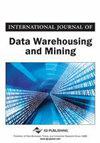基于语义特征向量的渔船类型识别
IF 0.5
4区 计算机科学
Q4 COMPUTER SCIENCE, SOFTWARE ENGINEERING
引用次数: 0
摘要
利用人工智能识别渔船类型已成为海洋资源管理的一项关键技术。然而,经典的特征建模缺乏表达时间序列特征的能力,特征提取也不够充分。因此,这项工作的重点是基于语义特征向量识别拖网渔船、刺网渔船和围网渔船。首先,我们从包含大量脏数据的海量复杂渔船监控系统历史数据中提取轨迹,然后提取渔船轨迹的语义特征。最后,我们将语义特征向量输入 LightGBM 分类模型,对渔船类型进行分类。在该实验中,我们提出的方法在东海渔船数据集上的 F1 测量值达到 96.25,比基于渔船轨迹的经典特征建模方法高出 6.82%。实验表明,该方法对渔船分类准确有效。本文章由计算机程序翻译,如有差异,请以英文原文为准。
Fishing Vessel Type Recognition Based on Semantic Feature Vector
Identifying fishing vessel types with artificial intelligence has become a key technology in marine resource management. However, classical feature modeling lacks the ability to express time series features, and the feature extraction is insufficient. Hence, this work focuses on the identification of trawlers, gillnetters, and purse seiners based on semantic feature vectors. First, we extract trajectories from massive and complex historical Vessel Monitoring System data that contain a large amount of dirty data and then extract the semantic features of fishing vessel trajectories. Finally, we input the semantic feature vectors into the LightGBM classification model for classification of fishing vessel types. In this experiment, the F1 measure of our proposed method on the East China Sea fishing vessel dataset reached 96.25, which was 6.82% higher than that of the classical feature-modeling method based on fishing vessel trajectories. Experiments show that this method is accurate and effective for the classification of fishing vessels.
求助全文
通过发布文献求助,成功后即可免费获取论文全文。
去求助
来源期刊

International Journal of Data Warehousing and Mining
COMPUTER SCIENCE, SOFTWARE ENGINEERING-
CiteScore
2.40
自引率
0.00%
发文量
20
审稿时长
>12 weeks
期刊介绍:
The International Journal of Data Warehousing and Mining (IJDWM) disseminates the latest international research findings in the areas of data management and analyzation. IJDWM provides a forum for state-of-the-art developments and research, as well as current innovative activities focusing on the integration between the fields of data warehousing and data mining. Emphasizing applicability to real world problems, this journal meets the needs of both academic researchers and practicing IT professionals.The journal is devoted to the publications of high quality papers on theoretical developments and practical applications in data warehousing and data mining. Original research papers, state-of-the-art reviews, and technical notes are invited for publications. The journal accepts paper submission of any work relevant to data warehousing and data mining. Special attention will be given to papers focusing on mining of data from data warehouses; integration of databases, data warehousing, and data mining; and holistic approaches to mining and archiving
 求助内容:
求助内容: 应助结果提醒方式:
应助结果提醒方式:


